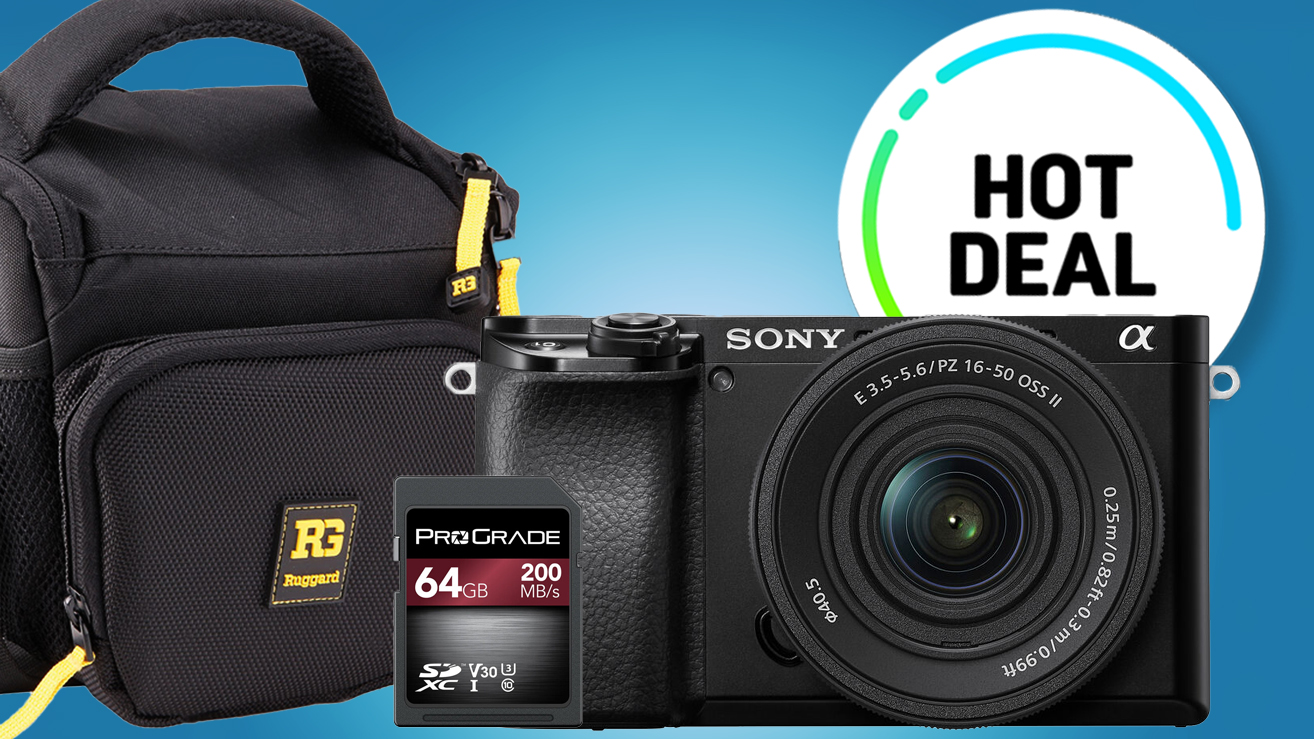64% of photographers say clients don’t even notice the use of AI, while 81% of AI-savvy photographers say they have a better work-life balance
A survey by Aftershoot sheds light on what users think about AI, client satisfaction, and work-life balance
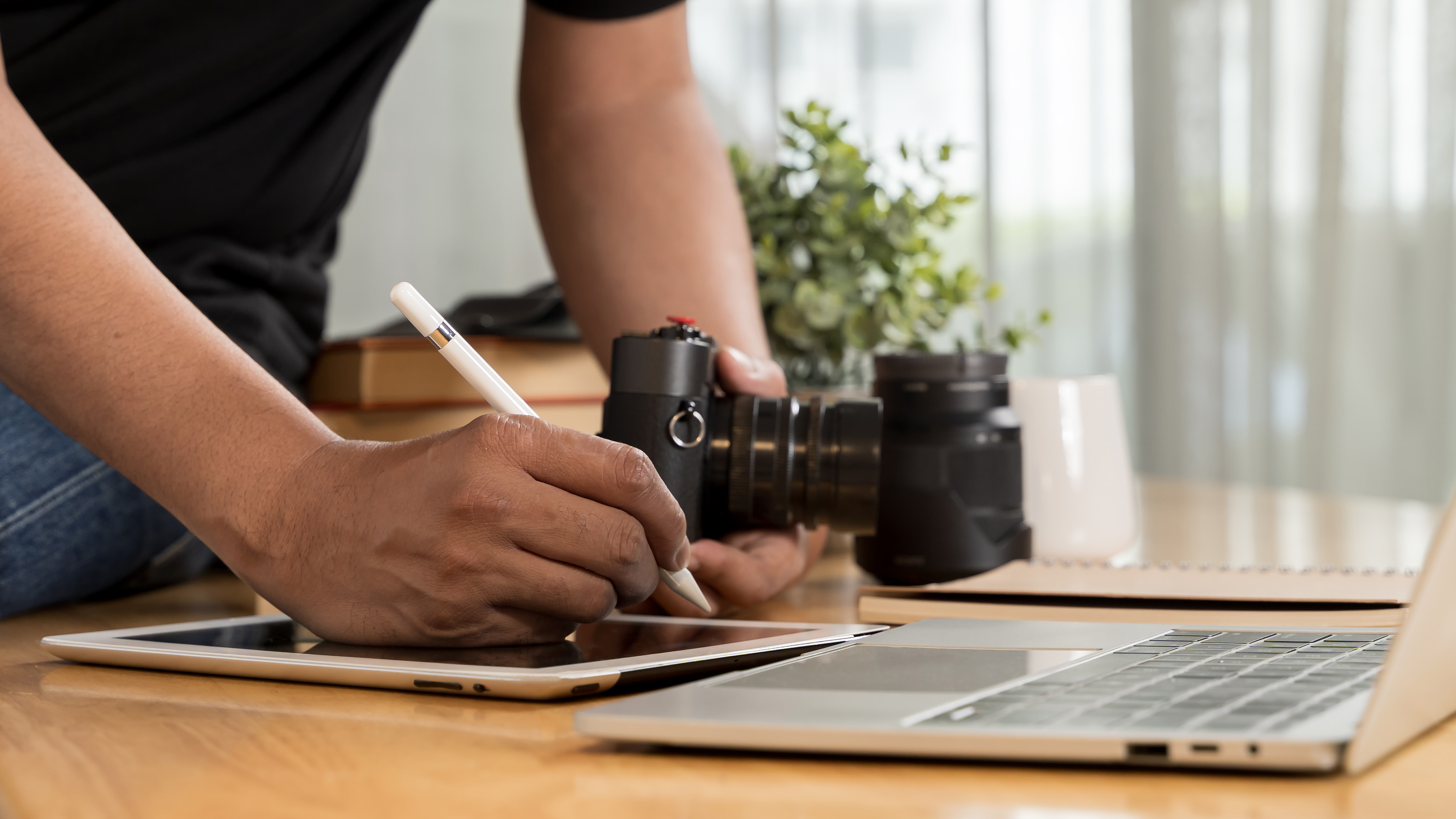
As the art community debates the ins and outs of artificial intelligence, AI-focused software brand Aftershoot asked more than 1,000 photographers for their take – and the results highlight some interesting statistics.
According to the Aftershoot 2025 Great Photography Workflow Revolution report, 64% of photographers indicated that clients didn’t notice the use of AI, while 81% reported a better work-life balance.
The survey asked more than 1,000 photographers who already use Aftershoot a variety of questions on how the technology has impacted their workflow. All of those surveyed are considered “active AI adopters.”
The survey wasn’t limited to location and included photographers around the globe, with around 38% of respondents having between 11-20 years of experience. Around 54% of photographers in the survey photograph weddings, where only 16% are portrait photographers.
A survey that exclusively looks users of Aftershoot, the AI-driven photo culling software, may not indicate trends within the broader photography community, and also may not apply to users of other AI platforms. But the report has some interesting glimpses at some of the challenges facing the industry and how AI is being used.
While 64% of respondents said that clients didn’t notice the use of AI, 30% indicated that they received positive feedback on faster turnaround times. Only 1% of those surveyed said that clients had negative feedback on AI use.
Eight out of every ten photographers surveyed indicated that work-life balance had improved after switching to AI workflows. Around a third of respondents said they used the time that they saved for creative projects, education or business growth.
The best camera deals, reviews, product advice, and unmissable photography news, direct to your inbox!
Out of those surveyed, 28% said they delivered full galleries within a week, more than twice the number from Aftershoot’s 2024 survey. Only 7% of respondents said they planned to use that time savings for more competitive prices, despite 70% indicating clients seemed more price sensitive. Instead, 60% said that they reinvest that time in premium experiences and client relationships.
While the survey focused on photographers already making use of AI, not all the respondents use generative AI – a form of machine learning that uses AI to create something that wasn’t there before.
By contrast, 40% reported not using AI enhancements or generations at all, while generative expand and generative fill tools had the second highest use among about a third of respondents.
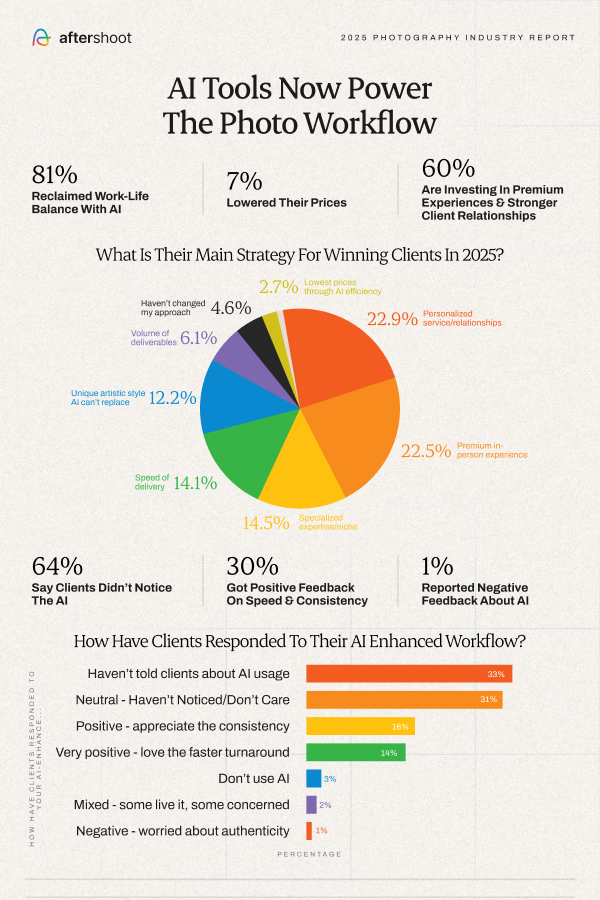
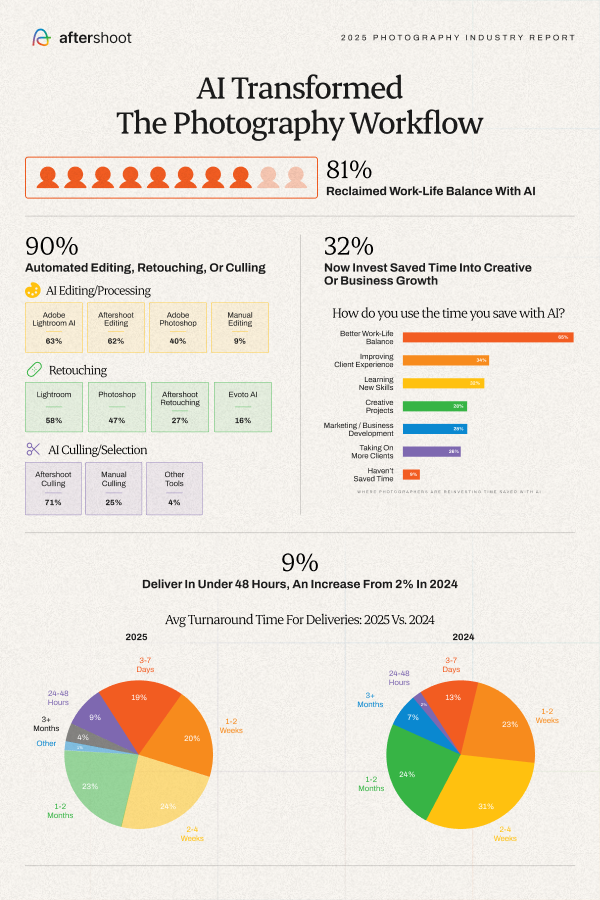
While less than half report using generative AI or image enhancements, 71 percent said they use Aftershoot for culling, or selecting which photos to deliver. About 58 percent use Lightroom for retouching, followed by Photoshop at 47 percent and Aftershoot’s own retouching tools at 27 percent.
Among those surveyed, 62 percent said they use both AI and manual hybrid workflows, and 31 percent said they were AI only. A majority – 68 percent – predicted that AI will handle more than 50 percent of post-production within the next two years.
One of the downsides to working with additional AI software is price – 52 percent said that up to a quarter of their software budget was spent on AI, while 42 percent said Ai makes up an even higher percentage of the software budget.
Photographers can access the full study results from Aftershoot.
You may also like…
Read our Aftershoot review, or browse the best photo editing software.
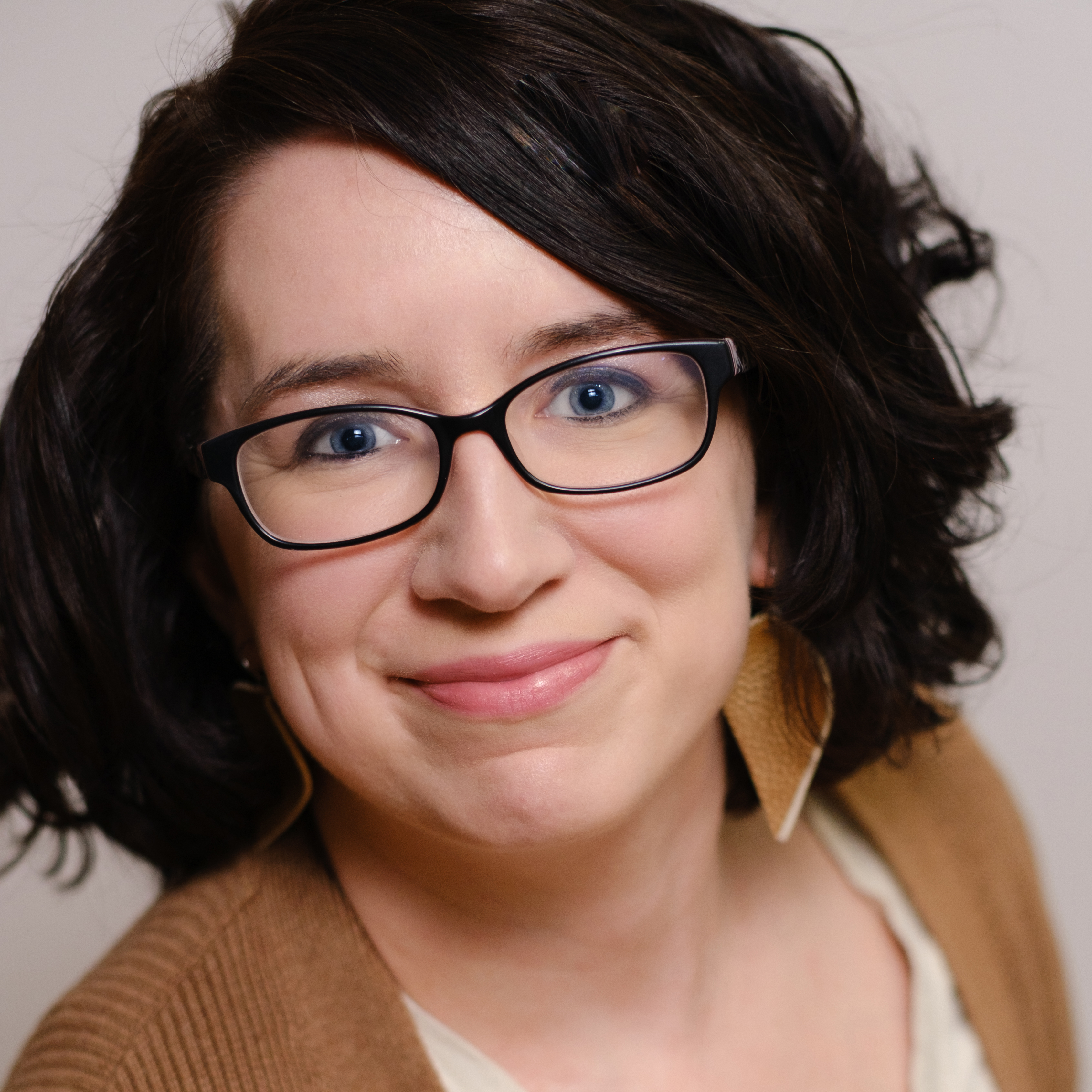
With more than a decade of experience writing about cameras and technology, Hillary K. Grigonis leads the US coverage for Digital Camera World. Her work has appeared in Business Insider, Digital Trends, Pocket-lint, Rangefinder, The Phoblographer, and more. Her wedding and portrait photography favors a journalistic style. She’s a former Nikon shooter and a current Fujifilm user, but has tested a wide range of cameras and lenses across multiple brands. Hillary is also a licensed drone pilot.
You must confirm your public display name before commenting
Please logout and then login again, you will then be prompted to enter your display name.
